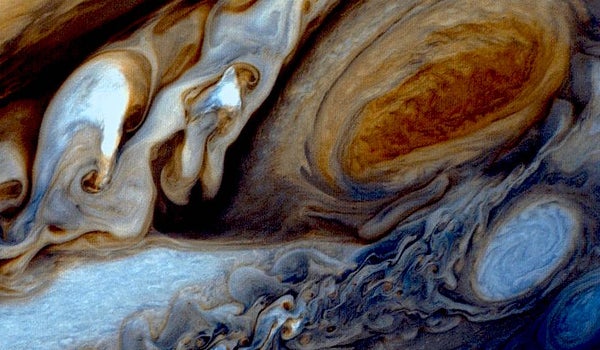This article was published in Scientific American’s former blog network and reflects the views of the author, not necessarily those of Scientific American
On the surface of the Earth we live within a range of pressures and temperatures that sample a mere sliver of what the universe can dish up. Otherwise familiar compounds can behave very differently in some of the environments deep inside the planet, or in the environments arrayed across our solar system.
Gas giant planets are particularly good at creating some truly alien and, to us, unspeakable conditions. The interiors of both Jupiter and Saturn for example have long been suspected of reaching pressures where the element hydrogen assumes the behavior of an electrically conductive liquid metal.
In fact, if you run the numbers, most of the planetary mass of the solar system is in the form of metallic hydrogen. As much as seventy-five percent of Jupiter alone may consist of this phase of hydrogen. That's pretty astonishing, and makes for some nice science fiction scenarios where visiting aliens classify us as 'mostly metallic hydrogen'.
On supporting science journalism
If you're enjoying this article, consider supporting our award-winning journalism by subscribing. By purchasing a subscription you are helping to ensure the future of impactful stories about the discoveries and ideas shaping our world today.
But this idea is also based on theoretical models for these extreme states of matter - where pressures can exceed 100 million atmospheres. To test the possibility by actually squeezing hydrogen in a laboratory to mimic the interior pressure and temperature conditions of a gas giant is a huge challenge.
A new study by McWilliams et al. published in Physical Review Letters provides some intriguing insights. Using a diamond anvil with pulsed-laser heating, the team has managed to probe the behavior of hydrogen at pressures up to about 1.5 million atmospheres and temperatures as high as 6,000 Kelvin.
This experiment has accessed the conditions under which hydrogen starts to transition from a gas to a metal. What the researchers find is that the transition to a fully metallic state occurs at significantly higher pressures and temperatures than predicted. And during that transition the hydrogen is not only somewhat conducting, but also opaque to visible light, while still transparent to infrared wavelengths.
The implication is that planets like Jupiter and Saturn should actually have thick interior layers of this 'dark' hydrogen above their conductive, metallic hydrogen zones. And the infrared transparency of dark hydrogen may help explain how heat leaks out and allows these, and any other, gas-giant worlds to cool and evolve.
Perhaps the most remarkable discovery is that even the simplest element in the universe still has some tricks up its sleeve - if pushed into the right conditions.
